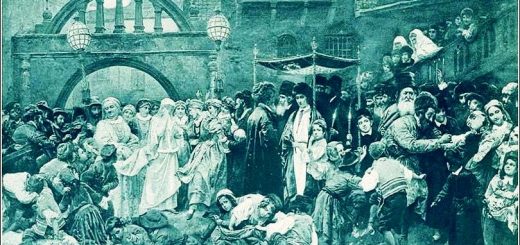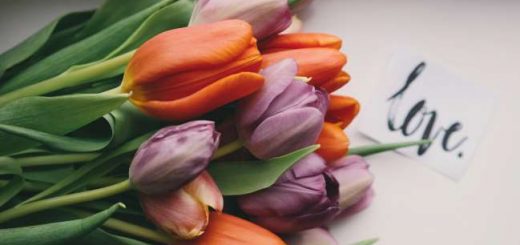Remember Us for Life

Beginning on Rosh Hashanah and continuing through Yom Kippur, we add at the beginning of every Shemoneh Esrai, “Remember us for life, O King, Who desires life? What precisely is this life for which we pray? Do we have anything more in mind than that we not die in the year to come?
Most people conceive of life as series of moments, each presenting some opportunity for pleasure. When that opportunity is not realized, the moment is dead. But even when we succeed in achieving a certain sensory exhilaration, a moment later that sensation has passed forever and is unrecoverable.
Viewed in this fashion, life is a succession of little deaths, which we use to count down to our ultimate demise. That is why Chazal refer to such life as chayei sha’a, momentary life.
Life so defined is inevitably experienced in the debit column. We are like someone at the amusement park waiting half an hour for a thirty second roller coaster ride. The moments of sensory excitement will inevitably be far fewer than the intervals in between.
Life in the Torah’s terminology, however, is always something eternal, continuous. The source of life is described as a constantly flowing spring – mayim chayim, and when we attach ourselves to that never ceasing spring, we experience eternity.
That life is referred to as chayei olam haba – the life of the World to Come. But it is a mistake to conceive of it as something that takes place only after we die, as a reward for our actions in this world. Every day in our prayers we say, “He has planted eternal life within us.” Eternal life can be experienced in this world.
To experience eternal life means to rejoice in the very fact of our existence, unconnected to anything outside of ourselves. That rejoicing derives from the recognition that we exist only because G-d brought us into being and sustains us at every moment.
When we pray for life on Rosh Hashanah, we pray to be connected to the Source of life. We express our longing for original moment of Creation, for the point in time before the yetzer hara entered inside Adam HaRishon, when it still was something wholly external to him in the form of the serpent. We long for the moment in time when nothing existed besides the awareness of the connection to Hashem.
The Shofar of Rosh Hashanah helps us return to that moment of freedom from the yetzer hara. On the one hand, it reminds us of the original breath of Divine inspiration: “And G-d breathed into his nostrils the breath of life, and he was a living being” (Bereishis 2:7). With that breath of life, Hashem placed within Adam HaRishon a portion of Himself. As the Ramban writes, “One who blows into the nostrils of another, gives him from his own soul.”
The sounds of the Shofar precede speech and all articulated understanding. They recall the primordial moment of the soul struggling to become aware of its own existence — the baby’s first cry as it enters the world. The sounds of the Shofar come from a place prior to consciousness, a place too deep for expression in words, from the cheleik Eloka mi’ma’al – the Divine portion from Above.
All that exists is an expression of the Divine will. But only Man contains within Him a portion of the Divine. Only He is aware of the source of his existence, and has the ability to proclaim His Creator. The Targum translates “a living being” into Aramaic as “a speaking being,” for to live is to make some singular statement about the Creator.
To rejoice in the awareness of our own existence is to recognize ourselves as absolutely unique. That uniqueness derives from our ability to reveal some aspect of the Divine in a manner that no one else can. No one else can make the same statement, for no one else was born with the same constellation of talents, no one else was born into the same familial or historical situation, and no one will confront the same exact challenges.
The joy of existence, then, is the knowledge that one’s life has a purpose, a mission. In the Zichronot section of the Mussaf prayer, we recite: “Every living being passes before You — a man’s action and his mission.” Beyond the commandments that are equally incumbent on every Jew, each one of us was created with a unique mission. And we will be judged according to our fulfillment of that mission, no less than according to our performance of the mitzvot.
The task of Rosh Hashanah is to ascertain the nature of our unique mission. The Mishnah describes four times during the year when the world is judged, and at each such period an offering was brought in the Temple appropriate to the judgment. On Sukkot, for instance, when the world is judged for water, a water libation was brought on the Altar.
So what is brought on Rosh Hashanah? On Rosh Hashanah, we bring ourselves. We stand in absolute solitude before the Creator, as He calls upon us to answer the question: Why was I created? What do I have to contribute to the world that no one else can?
No one can ever answer that question with absolute certainty, but we can at least enunciate an approach. First, each of us must identify our own special abilities and talents, for these are the G-d-given tools for the achievement of our mission. Rabbi Yisroel Salanter used to say that as bad as it is for a person not to know his faults, it is far worse not to know one’s strengths. For those strengths are the primary tools for the fulfillment of his or her unique role in the Divine plan.
Next we must ask ourselves: What do I see in the world about me that needs repair? We should never assume that just because we have noticed a problem in need of fixing that everyone else has as well, and that someone of greater abilities will rectify the problem. The fact that we noticed may be part of our mission.
Having identified what is unique about ourselves, we can plot our direction for the coming year. And with that vision for the future comes a renewed sense of purpose, a feeling of attachment to the Source of all life.
May we all be inscribed and sealed for life.
This piece first appeared in Mishpacha Magazine, October 2, 2005.




Recent Comments